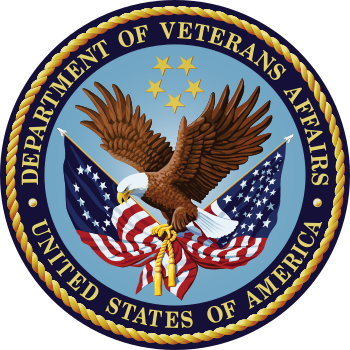Veterans Information
If you have stories that relate to golf and veterans - please contact us to get it put on the website
We are supporters of the Armed Forces!
The Story of Wild Chicken (A Vietnam Golf and Life Story)
By Bob Thibodeau - 10/18/08
I have played golf for more than forty years. I play as often as possible, avidly watch the golf channel, and believe that some new tip will unlock my true potential. The change from casual exploration of the game to my recreational passion came at a crossroads in my life when I met a caddy with the nickname “The Wild Chicken”. This is the story of how that meeting happened and what it has meant to me during my journey over the last forty years.
My first recollection of televised golf is a “Masters” on black and white television. When I was 12 or so I followed my father around a course on what was, for him, a very rare outing. In high school I played with friends a few times, using his clubs; none of us knew what we were doing.
In 1964, I was eligible for the military draft. Unless I volunteered for a branch of the service the government would choose for me. Rather than wait for fate to intervene I selected the Air Force. It seemed to be the least risky as the Air Force offered a technical education. After training, I was stationed in Newburg, N.Y. near West Point. My job was to test and maintain radio equipment. The base was close to home in Massachusetts and New York City. I went home frequently and enjoyed the occasional visits to New York City and USO tickets to off-Broadway shows.
In 1967 the Air Force transferred me to Clark Air Force Base in the Philippines; however, with two years of my four-year commitment, it was time to move on and see the world. I volunteered for international duty and was sent to Clark Air Force Base in the Philippines. I soon learned that Clark was only a way station and that I would frequently be redeployed throughout Southeast Asia. My unit, the “First Mobile Communications Squadron” mission was to prepare and install radio equipment in stationary camouflaged vans at air bases in Thailand, Korea, and Vietnam. The radios provided the talking link from ground controllers to the pilots.
Before I could be sent to install the vans, I had to attend and graduate from Jungle survival school. Tribes of Nigrito’s living near the base were used in a two-day overnight exercise designed to sharpen our escape and evasion skills. They stood less than five feet tall, wore loincloths, and used primitive tools and weapons. In World War two they had killed many sleeping Japanese by slitting their throats. If they captured us, they were given bags of rice as a reward. Most of us were rounded up despite an hour head start into the jungle.
After graduation, my team was sent to install and operate the vans at sites across Southeast Asia. Some of the vans were assigned to new bases and others to replace vans that had been damaged in attacks. I spent my last six months in Viet Nam. The Viet Cong were mixed into the population, and anyone could be an attacker. Hand grenades were tossed into living quarters. Rocket attacks and snipers were always a threat. Body bags of those killed in action were often loaded onto aircraft a few feet from our van.
In February 1968, the Viet Cong launched the TET offensive. It was a nightmare come alive and fear brought to life. A rocket hit the barracks next to ours, killing and wounding many. The random nature of the rockets and the thundering impact, smell, and noise had everyone terrified. It was a time spent frantically trying to find a safe place. The rockets continued to hit the base at random times onto random targets. A change of a few feet on the trajectory and many of us could have been killed in a flash. A bunker made of sandbags was our sleeping cave; even though it was vulnerable to a direct hit. I was lucky, and aside from scraped knees and elbows, I was physically fine.
In April I returned to the Philippines. Even in a safe haven, my nerves were on adrenaline. My job was to relax and be available if called. The base golf course was a convenient escape. The course was adjacent to the Nigrito village and Jungle Survival School, new classes were preparing replacements for those fortunate few like me, that were headed home.
Filipino caddies were available. A caddy called the “Wild Chicken” and I became friends. He was serious about his name; it had something to do with the wild chicken’s survival instincts in the jungle. He was allowed to play occasionally and helped me with the basics of the swing. Our frequent outings were unhurried and I learned the fundamentals with his help. His friendly manner fueled my passion and interest in the game. There was no lack of banter between us, and his caddy friends always had something to say. I loved the camaraderie. His grasp of the rules was astute and his enforcement was rigid. His loud shout of “ONE!” when I whiffed a tee shot still makes me laugh. He was genuinely sad when one of my shots collided with a bird flying across a fairway. Despite the impact, and lost feathers, the bird recovered and was soon gone. The Wild Chicken was my golf basic training instructor. He taught me how to play, to respect the rules and subtleties of the game, and how to focus my passion for the game through a light-hearted lens.
I was sent back to California in June 1968. Much had changed in the 15 months I had been gone. The war and the murders of Martin Luther King and Bobby Kennedy had helped induce a chaotic mood in the country. I needed stability, and a good job to start my new life. About a year later I married the girl of my dreams—“Sparky”, my wife of 40 years. My Air Force training opened the door to a big company. I have had a rich full life blessed by, good health, career success, great kids, beautiful grandkids, and a passion for the game. I realize now that much of my success came from the balance golf offered during the years of striving to build a career. It has helped sooth my nerves as a release from business pressure and sustained my soul over the years as a wonderful hobby. Scores are a small part of the experience. The essence of the game is about striving to get better, laughing, stories, and friendships. The same ingredients that began fueled my love of the game when I met the Wild Chicken.
Our friendship changed my life and I treasure the experience. His counsel and kindness were special. I hope he has lived a long happy life; plays well, often, and laughs out loud every day.
The 3rd Annual PGA Hope West Coast Meetup 2023
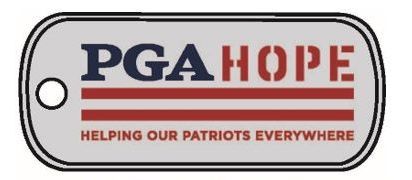
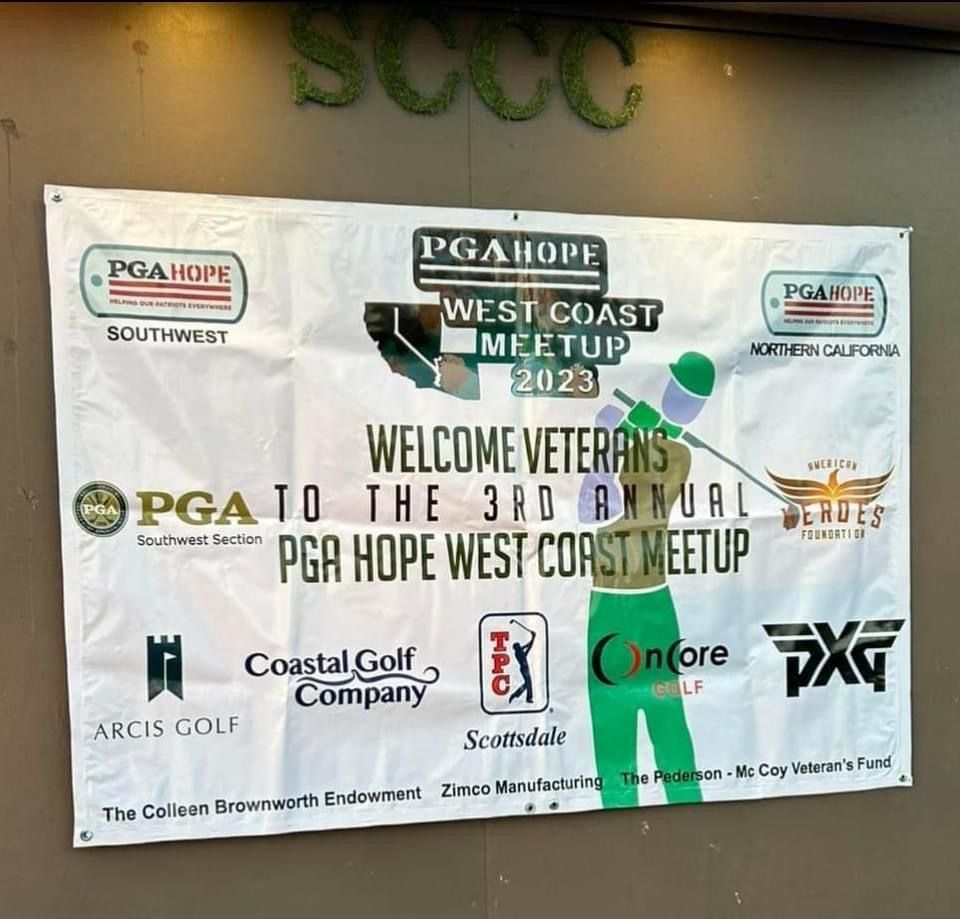
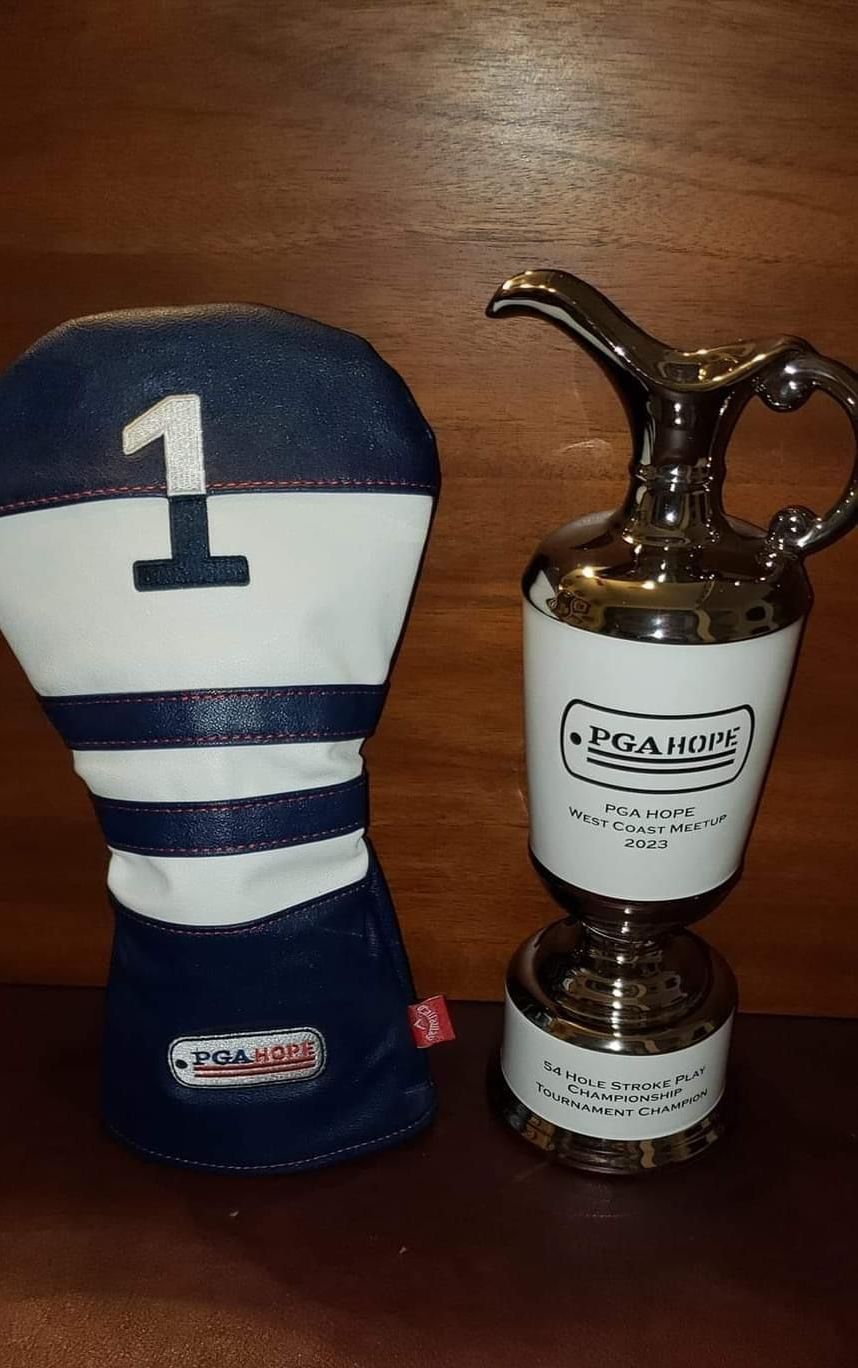
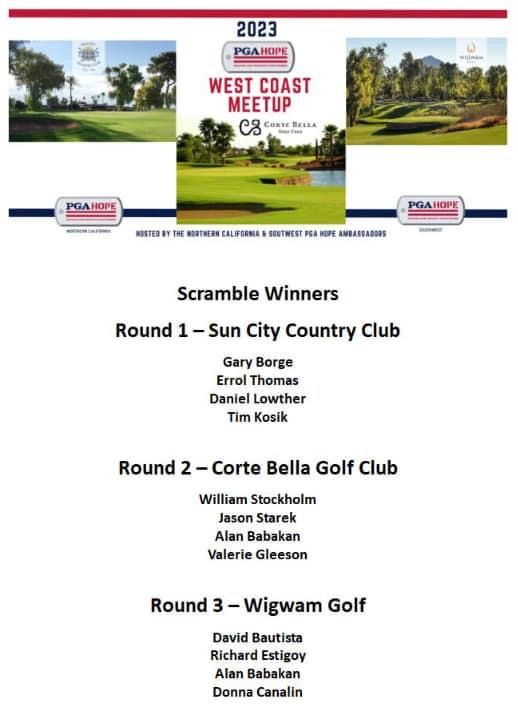

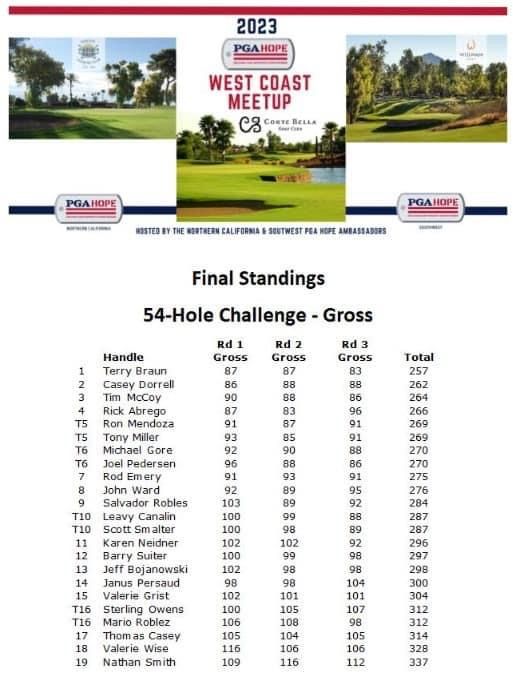
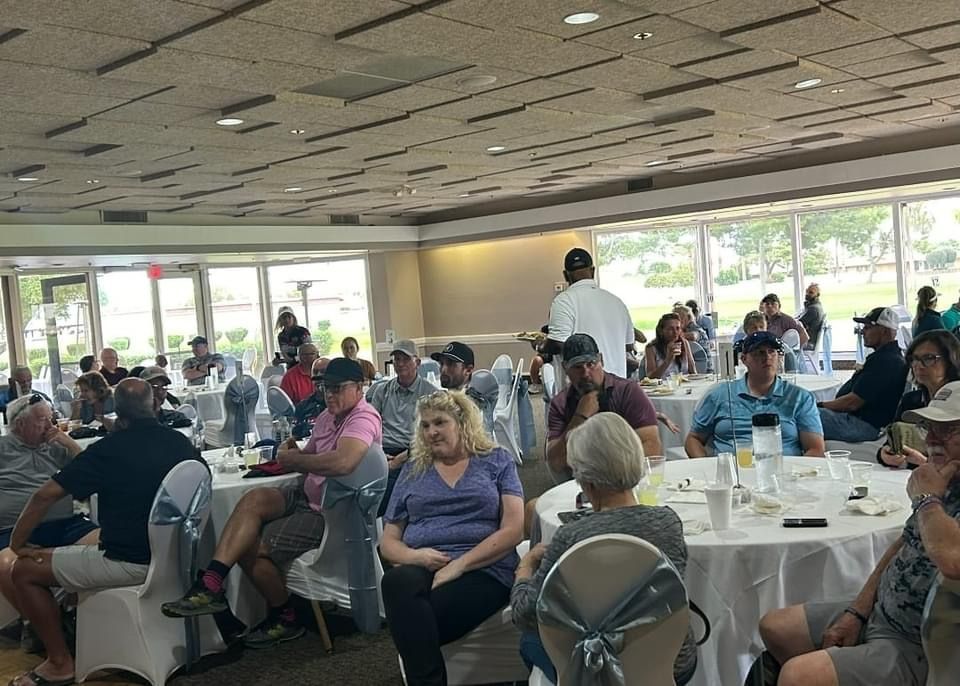
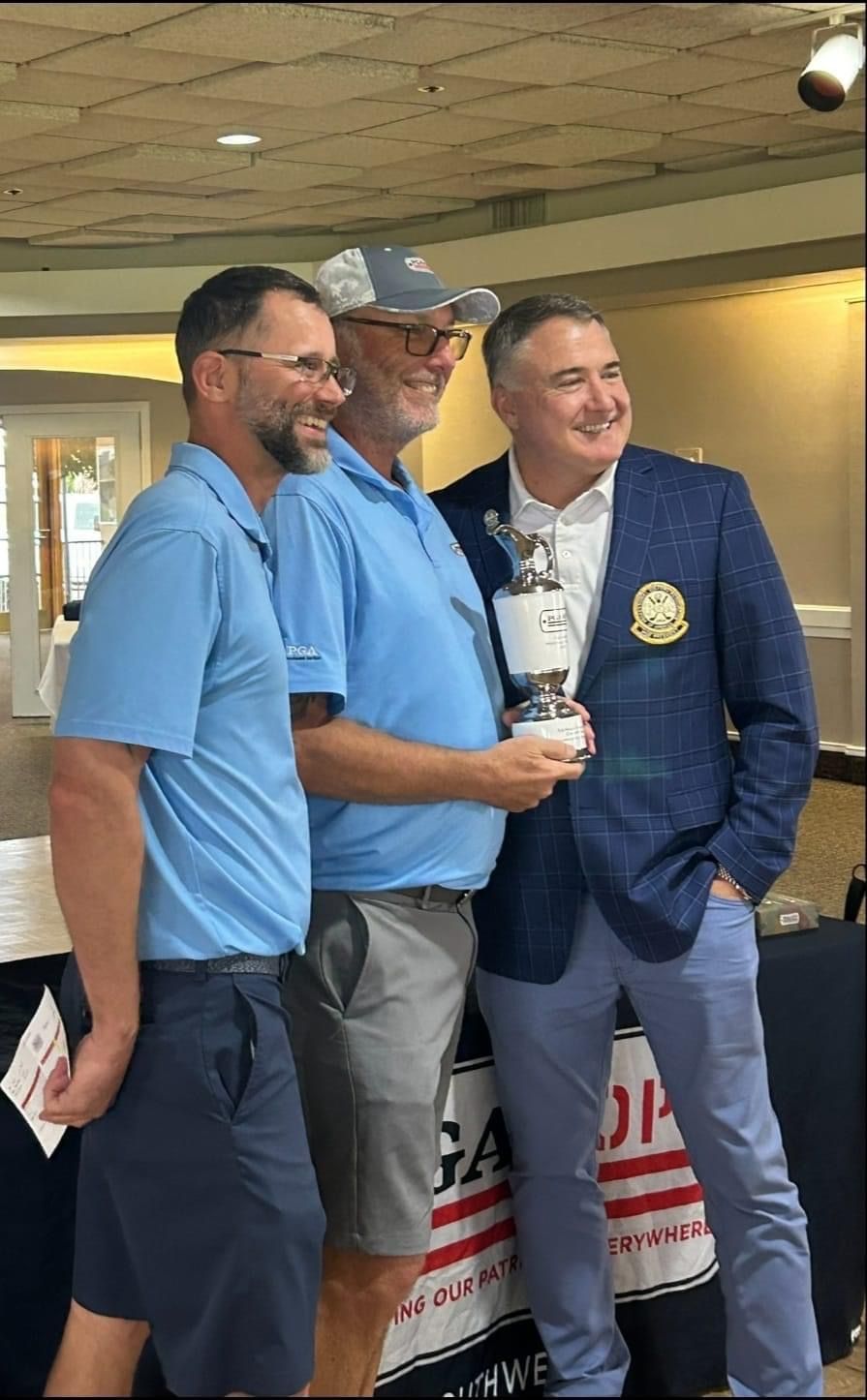
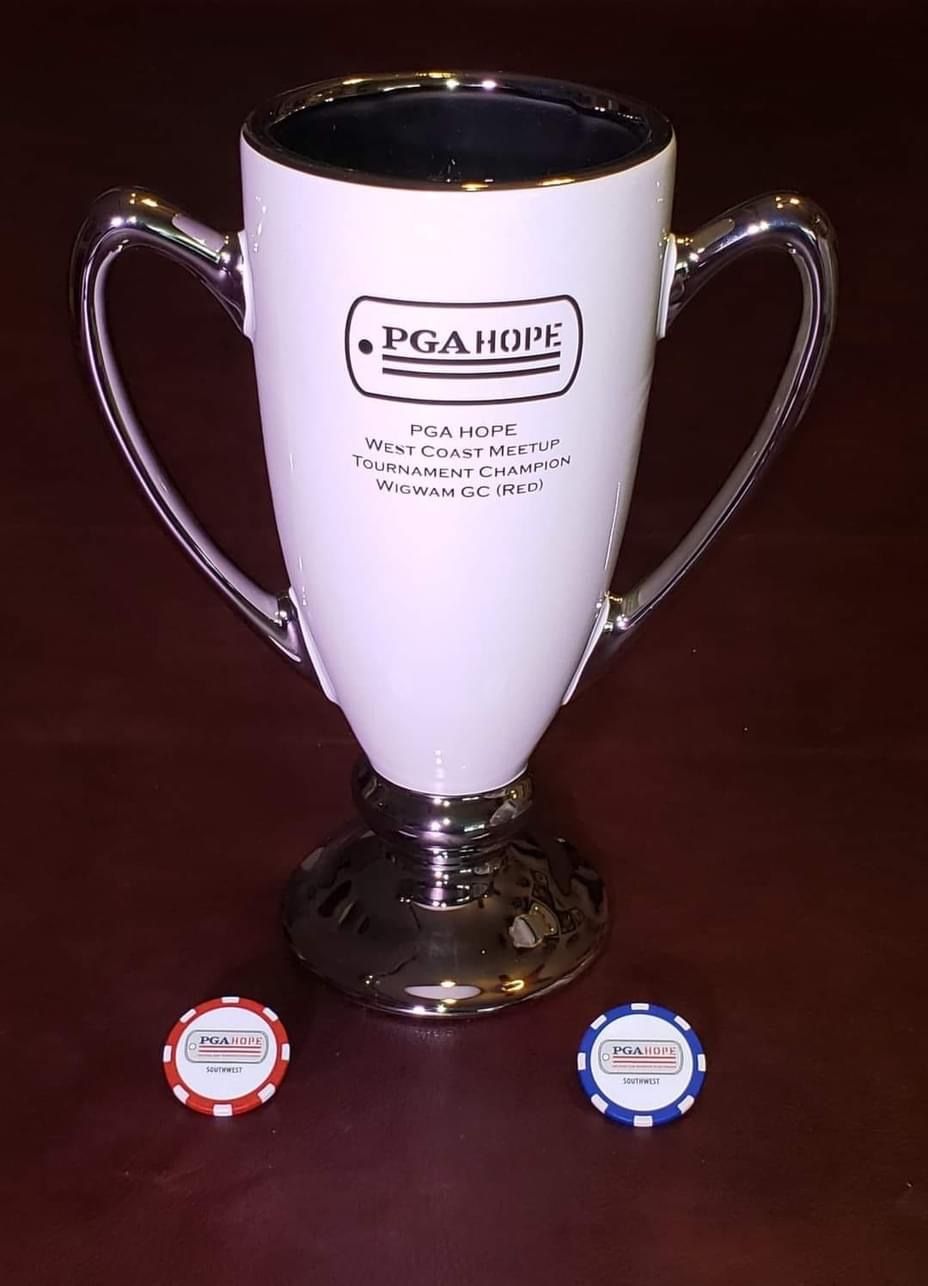

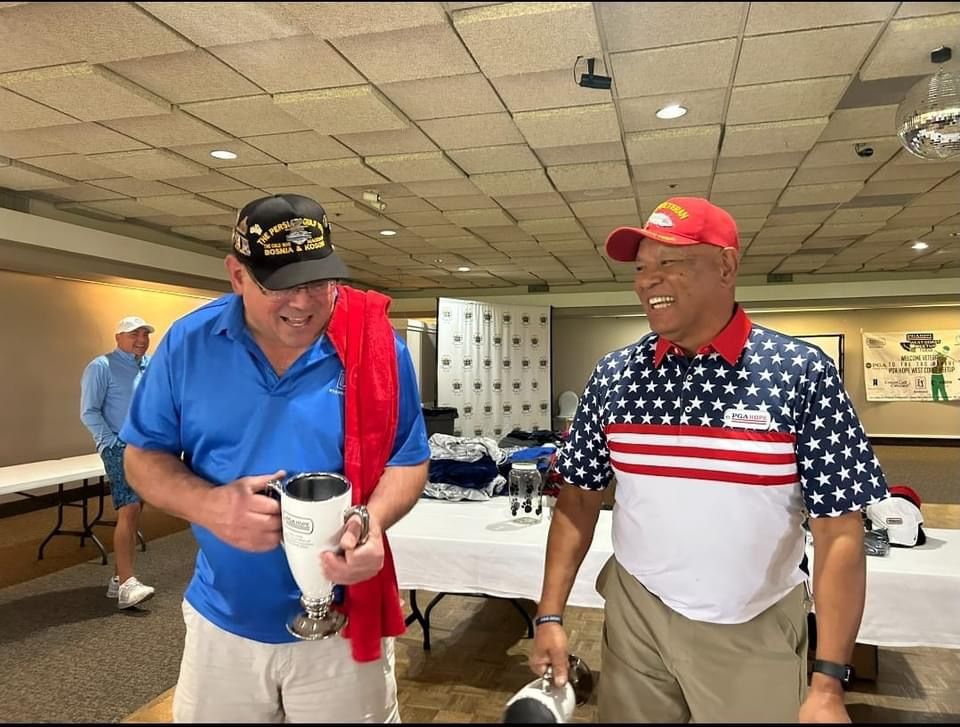
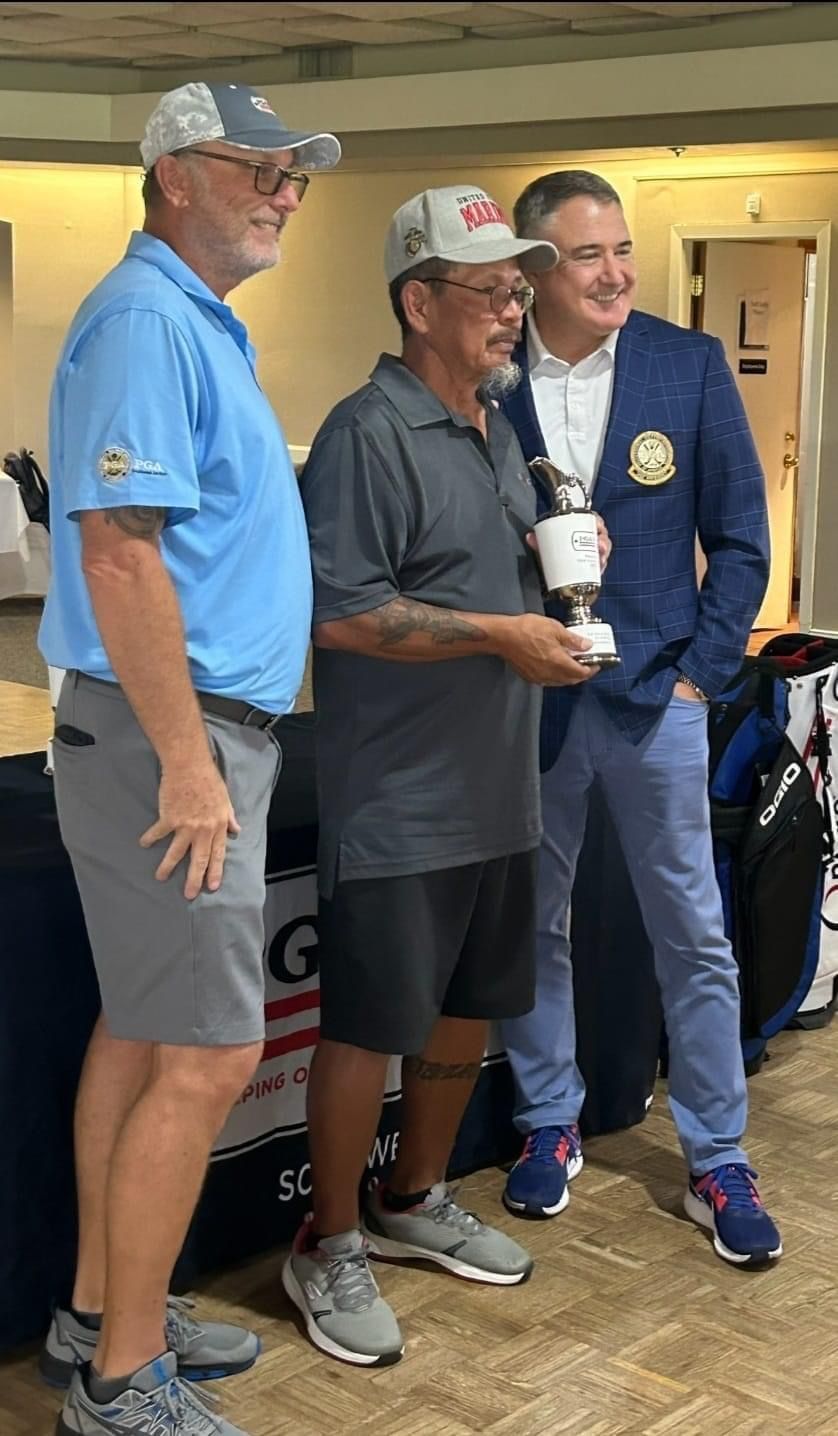
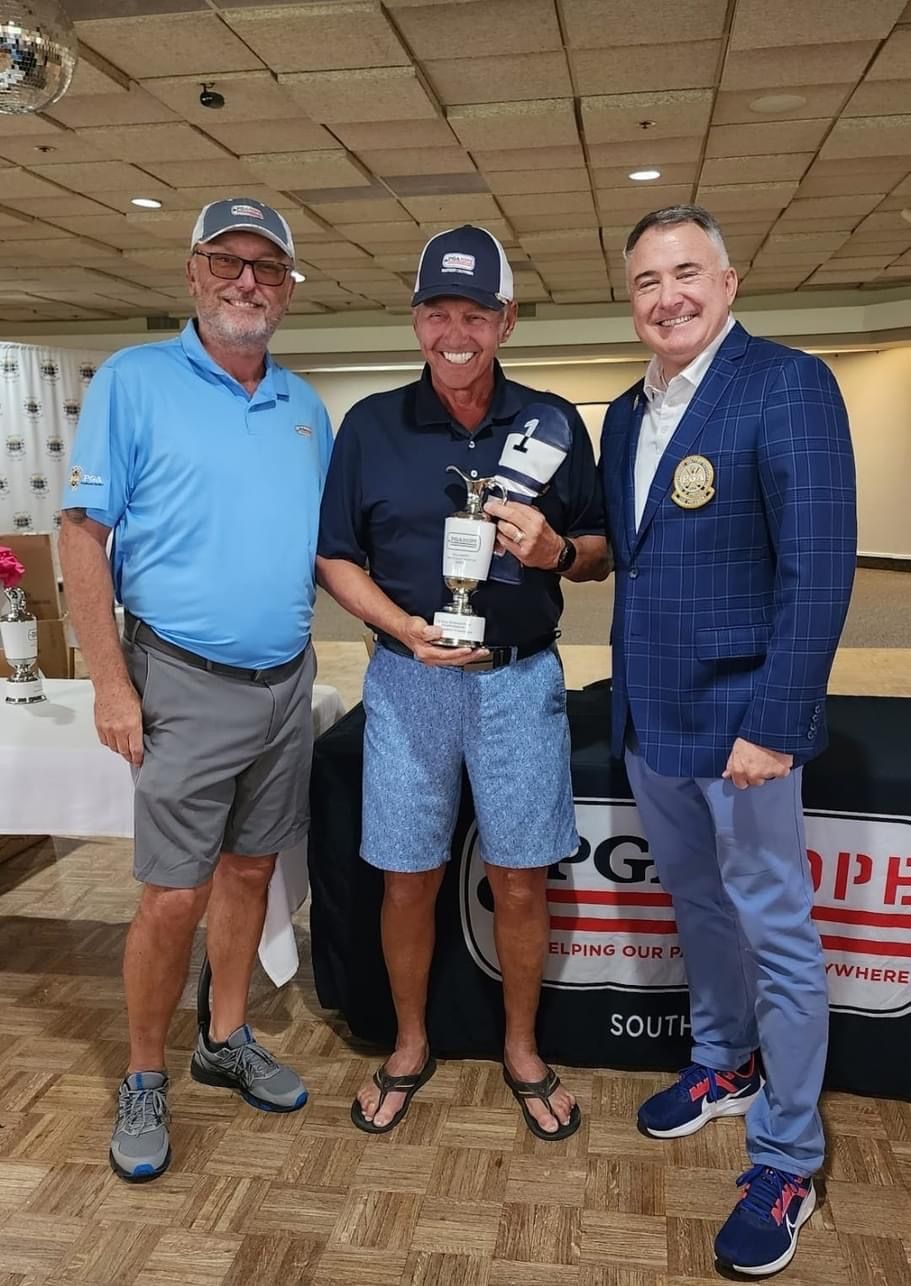
Golf Course Accessibility for Disabled Veterans
Golf is a sport celebrated for its ability to bring people together, fostering physical fitness, mental well-being, and a strong sense of community. However, ensuring golf course accessibility for senior veterans is essential to provide equal opportunities and enable them to fully participate in this beloved game. In this post, we investigate the importance of accessibility, explore current challenges faced by senior veterans, and highlight real-world solutions implemented by various organizations. By embracing these initiatives, we can create inclusive environments that empower senior veterans to enjoy the many benefits of golf. Learn more about the accessibility features and initiatives available at golf courses to accommodate disabled veterans, including adaptive equipment, accessible facilities, and inclusive golf programs.
The Need for Enhanced Accessibility
As veterans age, they may face mobility challenges or disabilities resulting from their military service or general aging processes. These limitations should not hinder their ability to enjoy the game of golf. The 2010 U.S. Census revealed there are 57 million Americans with some form of disability – that’s is almost 1 in 5 Americans. Additionally, according to the U.S. Department of Veterans Affairs, approximately 4.7 million veterans have service-connected disabilities. Therefore, it is crucial to make golf courses more accessible, ensuring that all veterans can participate and reap the benefits of the sport.
According to a study conducted by the National Center on Accessibility at Indiana University (usaga.org):
10% of people with some disability now play golf
22% of those with disabilities played golf before incurring their disability but are not playing now
35% of individuals with disabilities who are currently not playing golf are interested in learning
The study identified key factors for why those 35% of the people with disabilities would like to, but were not playing golf, and found that:
33% felt uncomfortable about playing in front of others
31% believed that the course staff did not know how to assist them
36% said that they needed a better understanding of the fundamentals of golf
38% stated a need for lessons specific to their disability
Several challenges contribute to the limited accessibility of golf courses for senior veterans. These include inadequate infrastructure, lack of awareness among golf course management, and limited availability of adaptive equipment. Many golf courses were not designed with accessibility in mind, featuring architectural barriers such as steep slopes, uneven terrain, and inaccessible facilities.
Additionally, there is often a lack of awareness regarding the needs and requirements of senior veterans among golf course management. This can result in a failure to provide appropriate accommodations, ultimately excluding potential players. Furthermore, the limited availability of adaptive golf equipment can hinder the ability of senior veterans with disabilities to fully participate in the game.
Understanding Accessibility Needs
Before exploring the specific modifications, it's essential for golf course management to understand the unique accessibility needs of senior veterans. Common challenges include limited mobility, difficulties with balance, and the use of mobility aids such as wheelchairs or walkers. By recognizing these needs, golf courses can identify areas where modifications can make a significant impact on accessibility.
Pathways and Ramps
Golf courses can improve accessibility by ensuring smooth, firm pathways throughout the course. Pathways should be wide enough to accommodate mobility aids and feature non-slip surfaces. Ramps can replace stairs, making it easier for senior veterans to navigate changes in elevation. Handrails on ramps can provide additional support and stability.
Accessible Tees
Designated accessible teeing areas can be created at each hole, allowing senior veterans to comfortably and safely tee off. These tees should be level, well-maintained, and have ample space for mobility aids. Providing seating options nearby can offer a resting place between shots.
Modified Bunkers
Bunkers can pose challenges for senior veterans with limited mobility. Golf courses can incorporate modified bunkers with shallow slopes and firm sand, making them more accessible for seniors. Additionally, providing designated access points with sturdy handrails can assist in navigating in and out of bunkers.
Wheelchair-Accessible Golf Carts
Equipping golf carts with features such as ramps, lifts, and hand controls allows senior veterans who use wheelchairs to enjoy the game more easily. These modifications enable individuals to remain in their wheelchairs while playing, enhancing their mobility and independence on the course.
Accessible Restrooms
Golf courses should ensure that restrooms are wheelchair-accessible, featuring wider doorways, grab bars, and adequate space for maneuvering mobility aids. Regular maintenance and cleanliness are also essential to ensure these facilities are readily available and functional.
Clear Signage
Well-placed signage with clear and visible markings can guide senior veterans through the course. Signage should indicate the locations of accessible features, such as accessible parking, restrooms, teeing areas, and pathways. Clear wayfinding instructions help individuals navigate the course independently.
Staff Training
Properly trained staff members who understand the needs of senior veterans are essential. Staff should be knowledgeable about accessibility features, adaptive equipment, and techniques for assisting individuals with mobility challenges. This includes aiding with equipment, offering guidance on accessible routes, and demonstrating sensitivity and respect towards senior veterans.
Collaboration with Disabled Golf Associations
Many regions have dedicated organizations such as the Disabled Golf Association (DGA) that work closely with golf courses to improve accessibility. They provide guidance on inclusive course design, host events, and offer opportunities for disabled and senior veterans to participate in the game.
Initiatives Worth Checking Out
To address these challenges and promote accessibility, numerous organizations are working diligently to create positive change within the golf community.
National Alliance for Accessible Golf (NAAG): NAAG is a leading advocate for golf accessibility and offers resources, education, and guidelines for golf courses to improve accessibility. They provide valuable information on accessibility standards, facility modifications, and training programs for staff members.
Professional Golfers' Association (PGA) of America HOPE: PGA offers the PGA HOPE program, which introduces veterans with disabilities to the game of golf and provides adaptive equipment. PGA HOPE also partners with local VA medical centers to create tailored programs that address the unique needs of veterans.
United States Adaptive Golf Alliance (USAGA): USAGA promotes and supports adaptive golf programs throughout the country. Their website offers a comprehensive directory of adaptive golf programs and resources, including information on accessible golf courses and equipment.
National Disabled Veterans Golf Clinics: In the pursuit of enhancing golf course accessibility for senior veterans, organizations such as Veterans Golf Clinics play a crucial role in empowering and supporting veterans through specialized programs and events. The Veterans Golf Clinics organization is dedicated to providing golf opportunities, education, and camaraderie to veterans of all ages and abilities.
By organizing golf clinics and events specifically tailored for veterans, this organization creates a supportive environment where senior veterans can learn, improve their skills, and enjoy the game alongside their military peers. These clinics often include professional instruction, adaptive equipment demonstrations, and opportunities for social interaction, fostering a sense of belonging and camaraderie among participants.
One of the notable aspects of Veterans Golf Clinics is their emphasis on providing adaptive golf programs. Through collaborations with adaptive golf equipment manufacturers and experts, they ensure that veterans with disabilities or limited mobility can access the necessary resources and tools to fully participate in the sport. This includes adaptive clubs, modified golf carts, and specialized training to accommodate individual needs.
Furthermore, Veterans Golf Clinics often collaborate with local golf courses to create accessible environments and promote inclusivity. They work closely with course management to identify areas for improvement, implement necessary modifications, and raise awareness about the unique needs of senior veterans. By fostering partnerships between Veterans Golf Clinics and golf courses, the accessibility initiatives can reach a wider audience, positively impacting more senior veterans.
The organization also emphasizes the educational aspect of golf, providing resources and guidance on the rules, etiquette, and techniques of the game. This not only enhances the experience for senior veterans but also empowers them to participate confidently in community golf events.
Through their commitment to the well-being of senior veterans, Veterans Golf Clinics exemplifies the importance of community-driven initiatives in promoting golf course accessibility. Their dedication to providing educational support, adaptive equipment, and a welcoming environment helps bridge the gap between senior veterans and the sport they love.
By implementing these tangible modifications, golf courses can create environments where senior veterans can fully participate in the game of golf. Enhanced accessibility allows for increased physical activity, improved social interaction, and a sense of belonging within the golf community. To address the challenges facing our disabled veterans, numerous organizations are leading the charge in providing education, support, and access to adaptive equipment. Providing accessible opportunities fosters independence, self-confidence, and overall well-being among senior veteran golfers.
Sources:

